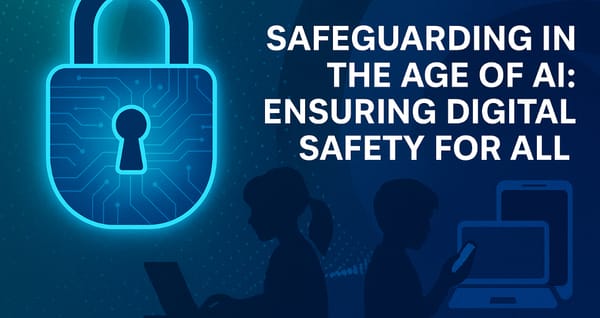Why Self-Defence is Considered a Taboo in Workplace Safety

Workplace safety is a concern for all businesses, and with good reason. In both the UK and internationally, the legal framework surrounding safety in the workplace is evolving, reflecting an increased recognition of personal safety as a crucial aspect of workplace environments.
In many organisations, preventing harassment has become a cornerstone of workplace policy, particularly with the introduction of legislation such as The Worker Protection Act 2024 in the UK. Employers are increasingly recognising it not just as a moral obligation but as a legal necessity to foster a respectful and inclusive environment. Training programs and clear reporting protocols are established to mitigate and handle instances of harassment effectively. However, when it comes to physical safety, businesses frequently overlook its critical importance. Physical safety considerations, such as self-defence training or protocols for dealing with violent situations, are often absent from safety policies. This omission can lead to a gap in comprehensive safety strategies, leaving employees vulnerable. It's crucial for businesses to expand their scope beyond harassment to include robust measures for physical safety, ensuring all aspects of workplace safety are addressed with equal diligence and urgency.
In the UK, the concept of "reasonable force" is paramount, determining the extent to which an individual can defend themselves without repercussions. British law emphasises the proportionality of the response to the threat faced, often leaving it to the courts to interpret what constitutes reasonable action. Meanwhile, in the United States, the diversity among state laws is substantial, with some states adopting rigorous "Stand Your Ground" laws, while others maintain an obligation to retreat when faced with danger. These legal variances underscore a growing legislative focus on harmonising workplace policies with broader self-defence rights. Employers are increasingly encouraged to integrate comprehensive safety training that aligns with these laws to foster a secure work environment where employees feel empowered yet legally aware of their actions.
Ensuring the well-being of employees is not only a legal obligation but also critical to fostering a productive and positive work environment. However, one crucial aspect of workplace safety often gets overlooked or, worse, stigmatised—self-defence. In today's increasingly volatile society, where public crimes of violence are on the rise, understanding the importance of self-defence in the workplace is more essential than ever.
Understanding Self-Defence in the Workplace
Defining Self-Defence
Self-defense refers to the act of protecting oneself from harm using reasonable force. In the context of workplace safety, it encompasses skills and techniques that employees can use to defend against physical threats. In the modern workplace, the scope of where employees perform their duties extends beyond traditional office settings. As remote work becomes increasingly prevalent, especially in home office environments, the need for self-defence training and safety measures becomes equally critical. Workers must also feel secure when visiting client offices, attending corporate events, or during business travel. Each of these environments presents unique challenges and potential risks, requiring employers to consider comprehensive and adaptable strategies to ensure safety at all times. Empowering employees with the right tools and knowledge for self-defence across various settings not only enhances personal safety but also reinforces an organisation’s commitment to looking after its workforce in every terrain and situation.
It's not about promoting violence but about empowering employees to feel secure in any situation.
Common Misconceptions
Many people misconstrue self-defence as aggressive or antagonistic, which leads to hesitation in adopting it as part of workplace safety protocols. However, the true nature of self-defence is far from violent. It's about equipping individuals with the knowledge and skills to protect themselves without escalating situations.
The Stigma Around Self-Defence
A "Dirty Word"
Why is self-defence often viewed as a "dirty word" in workplace safety? The answer lies in social and legal considerations. Some employers fear that promoting self-defence might imply a lack of safety within the workplace. Others worry about potential legal liabilities if an employee uses self-defence inappropriately.
The Reality of Workplace Violence
Despite these concerns, the reality is that workplace violence is a genuine threat that must be addressed with urgency and care. According to reports, incidents of workplace violence have been steadily increasing, affecting employees' mental health and overall productivity. It is vital for organisations to confront this issue head-on, with action-oriented strategies that include self-defence as part of their comprehensive safety plans. It's essential to balance compassion towards employees' fears and concerns with pragmatic solutions that genuinely enhance their safety. By cultivating an environment that encourages open dialogues about safety and providing necessary training, businesses can preemptively manage potential threats.
Taking Action: Integrating Self-Defence into Safety Protocols
Organisations must transcend the stigma surrounding self-defence by incorporating it into their existing safety protocols as a proactive measure. This could involve workshops led by accredited self-defence instructors, such as those Stay Safe Global expertly provide, where the focus is on teaching practical skills that employees can use in real-world scenarios. Moreover, it's crucial for businesses to work in compliance with legal standards, ensuring that self-defence measures are both effective and legally sound. By acting decisively, with compassion and respect for the realities employees face, employers can build a culture of trust and empowerment, where every individual understands and appreciates the importance of self-defence within the broader context of workplace safety.
The Benefits of Self-Defence Training
Empowering Employees
Self-defense training can significantly empower employees. Knowing they have the skills to protect themselves boosts confidence and reduces anxiety about potential threats. This empowerment translates into better job performance and higher morale.
Enhancing Team Cohesion
In addition to personal empowerment, self-defence training can enhance team cohesion and solidarity. When employees undergo training together, it builds camaraderie and mutual trust, creating a more unified workforce. As they learn to depend on each other for support and protection, the experience fosters stronger interpersonal relationships and a deeper sense of community within the organisation. By cultivating such an environment, companies contribute to a culture where safety is everyone's responsibility and team members feel genuinely supported by their colleagues, leading to an improved overall workplace dynamic. A collaborative approach to safety not only strengthens bonds but also encourages employees to share insights and strategies, enhancing collective security awareness and preparedness.
Addressing Resistance to Implementation
Resistance to integrating self-defence training into workplace safety protocols often stems from misconceptions and fear of change. It's crucial to approach these concerns with compassion and clarity, providing comprehensive information about the importance and benefits of such training. Engaging employees in open conversations about their worries and explaining how self-defence training addresses legitimate safety concerns encourages acceptance and participation. Offering testimonials from employees who have benefited from these programs can significantly aid in easing apprehensions. Additionally, aligning self-defence training with the company's core values and safety objectives reassures staff that their well-being is a priority. By addressing resistance thoughtfully, companies foster an inclusive culture that values proactive safety measures, ultimately leading to a more secure work environment for all.
Implementing Self-Defence in Workplace Safety Policies
Practical Steps
Integrating self-defence into workplace safety plans requires a thoughtful approach. Start by assessing the specific needs and risks within your organisation. Collaborate with experts like Stay Safe Global (SSG) to develop tailored training programs. Ensure that these programs are inclusive and accessible to all employees.
Role of HR and Management
HR and management play crucial roles in promoting a safe and empowering work environment. They must advocate for self-defence training and ensure that it is seamlessly integrated into existing safety protocols. Regular workshops and refresher courses can keep the training relevant and top-of-mind for employees.
Overcoming Challenges and Resistance
Addressing Concerns
Common concerns about self-defence training include fears of promoting violence and doubts about its effectiveness. Address these concerns by emphasising the non-violent nature of self-defense and providing evidence of its benefits.
Fostering Positive Attitudes
Creating a positive attitude towards self-defence in the workplace involves clear communication and education. Encourage open discussions about safety concerns and the role of self-defense. Highlight success stories and testimonials to build trust and acceptance.
Conclusion
Self-defence should not be the dirty word in workplace safety—it should be an integral part of it. By understanding its true nature and benefits, businesses can create a safer, more empowering environment for their employees. It's time for companies to re-evaluate their safety policies and consider incorporating self-defence training as a proactive measure.
If you're interested in learning more about how to integrate self-defence into your workplace safety plan, contact Stay Safe Global today. Together, we can make workplaces safer and more secure for everyone.





